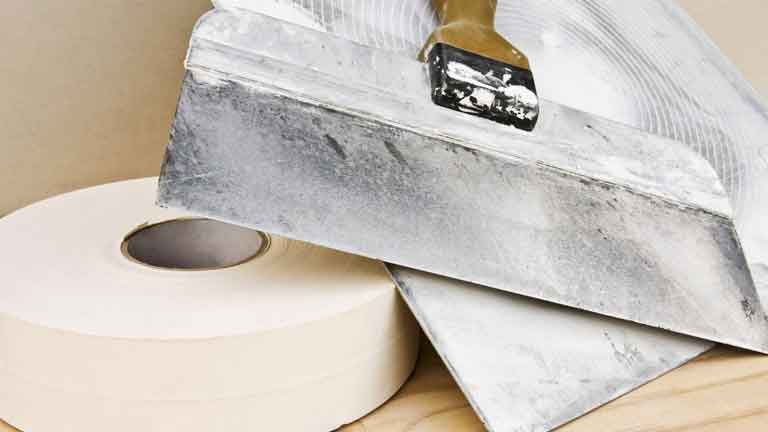Doing drywall patching or installation job is a tedious task unless you are doing it with a comfortable set of tools. To ensure the comfortability, there are many things to consider in the tools along with your body shape and movement capabilities. It honestly makes your work more enjoyable and soothing.
We will walk you through the basic staff of the two approach so that you can decide primarily between the drywall hawk and pan.

THE TWO APPROACHES
Typically, mud or plaster product is to be applied to the drywall surface, for smoothness, patching, and beautification. Traditionally, there are two approaches:
- Use of Hawk and Trowel
- Use of Pan and Knife
The drywall hawk vs pan is a classic argument. Even experts can’t seem to come to a conclusion that decides the most appropriate or efficient approach.
Each approach has a unique style of doing things, all to get the drywall patched. The two approaches tackle how to carry the mud or spackling material and get it smooth on the wall.
The Hawk & Trowel Approach
The hawk is a flat surface container that has a perpendicular handle below. The hawk is for holding the plaster mixture or mud while you pick and apply to the wall using a trowel. The trowel allows you to have a firm grip from behind. Both the hawk and the trowel have flat surfaces.
The Pan and Knife Approach
The pan is a typical-looking container with a hollow space to contain the mixture you are working. It is a rectangular-shaped metal box with an open top. The pan holds the mud or plastering mixture while you apply the mixture with a knife.
The knife is a flat type with a rectangular shape, and the handle is one side. It can be positioned vertically or horizontally, depending on how the handle is held.
Which One Should I Go For?
From my experience, I think the hawk and trowel approach is better because the advantages outweigh the disadvantages more. Let me state out my reasons:
Regardless of swiping horizontally or vertically, the trowel is supported from behind. This type of support doesn’t require twisting your wrist excessively, and the needed force can be easily exerted. With hawk and trowel, you can easily balance the wall’s edges because there are no serious wrist twisting.
You don’t have to switch the sides of the trowel while swiping back and forth. Also, you have less mixture falling on you when you are working drywall ceilings. The fall out rails of plaster mixture that needs to be wiped off is less when you use the hawk and trowel method.
The hawk and trowel’s main advantage over the pan and knife is the ease and efficiency of the work process itself.
Conclusion
The pan and knife approach has its benefits, although they do not match up with the hawk and trowel approach. The pan may not hold more mixture, but the plaster mixture or mud is more secured and prevented from falling off. Also, the knife is quicker for wiping excessive mixture from the wall.
Whatever approach you choose, it gets more efficient over time. I have seen experts spend less time on pan and knife approach, same with the hawk and trowel approach. It does no harm to try the two systems and decide what you are comfortable with the most since your body structure also plays a part.
Leave a Reply